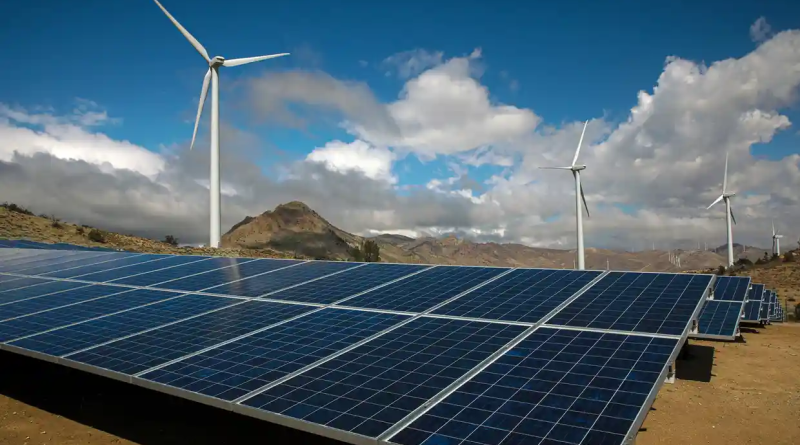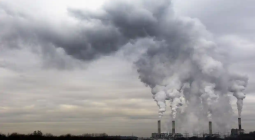We urgently need to cut emissions – the good news is we can do it quickly and relatively cheaply

The IPCC finds that emissions could be halved globally by 2030 at affordable costs if action is taken right across the board.
Enormous opportunities to cut emissions deeply are there, the time to act is now, and it can be done at affordable cost.
That would be the shortest possible summary of the thousands of pages of careful assessment in the world’s definitive stocktake of how to limit future climate change.
The assessment report released by the Intergovernmental Panel on Climate Change implies that while limiting global warming to 1.5C is practically out of reach, staying below 2C is possible in practice. And it is no longer just a theoretical possibility as it used to be not too long ago.
The IPCC finds that the world’s emissions could be cut in half by 2030 at affordable costs if action is taken right across the board. Of this, 50% could be achieved at relatively low costs of less than US$20 per tonne of carbon dioxide equivalent reduced, or even with net economic gains.
And that is before taking into account the massive benefits from reducing future climate change, and benefits such as cleaner air and better energy supply security.
The dramatic reductions in the costs of clean energy technologies over recent years are a gamechanger; for example, the cost of solar energy has reduced sixfold over just a decade. Positive experiences in the implementation of policies to cut emissions are another reason for optimism.
So while the urgency to take action has risen, the opportunities to really make a difference are also much greater.
The energy and land sectors are the largest opportunities globally. In energy, the story is about solar and wind power displacing fossil fuels, alongside many other ways of cutting emissions. On the land, it is about reforestation and avoided deforestation, better land management, and a shift to low-emissions agriculture.
Industry, transport and buildings are also crucial parts of the puzzle. The IPCC also shows that shifts in consumption habits, including changing diets, are also important.
Australia is in pole position on all of these. Ours is a high-emissions economy, which means that it is relatively easy to make big cuts. Add to that Australia’s advantage of a practically unlimited low-cost supply of renewable energy and huge opportunities for better carbon management on the land.
But the transition will, of course, also bring its challenges, including for Australia.
Fossil fuel use declines dramatically in scenarios of strong global climate action. Coal in particular will be on the way out, with the IPCC projecting reductions of 65% to 95% in global coal use by 2050 in 2C scenarios.
The numbers for reductions in gas vary greatly between scenarios, and depend heavily on how far below 2C the world may get.
How to get there in practice? For implementation of climate policy, this IPCC report assesses practical experience, not theory or modelling. The picture that emerges is a very positive one: the world over, climate laws and policies are on the ascendancy, and most measures that governments have taken are effective.
Experience has helped refine policies so they also meet other goals. For example, carbon taxes and emissions trading schemes are routinely designed so that low-income groups are protected from adverse financial impacts, by channelling some of the revenue to them.
The IPCC finds that packages of policies are the best way to achieve emissions outcomes. Economic instruments like pricing policies then link up with more specific regulatory policies, and are complemented by support for research and development, regional transition and so forth.
While the IPCC does not provide country-specific assessments, the implication for Australia is clear: we need to overcome the current situation where there is merely a patchwork of mostly half-hearted policies, and absence of any policy for many aspects of the economy. What we need is a comprehensive set of policies that guides and incentivises the shift to a net zero economy right across the board. This is what will make the needed investment flow.
And climate policy should not be the domain of governments and business alone. The IPCC report finds that to achieve the shift that is needed, climate action must involve civil society. Whether it is unions, NGOs, grassroots organisations, the research sector or business associations, all need to be on board and pull in the same general direction.
At this point in the electoral cycle, a question often asked is: what are the implications of the election outcome for climate policy?
In the picture that arises from the IPCC report, this should not be a question that needs asking. In a world where addressing climate change is done properly, climate policy is not a question of politics.
Rather, it would be a shared fundamental objective – just like national security, decent infrastructure or a well-functioning health and education system.
Perhaps by the time of the seventh IPCC assessment report, due in seven years or so, we may be closer to it.
Author: Frank Jotzo
Photograph: Irfan Khan




